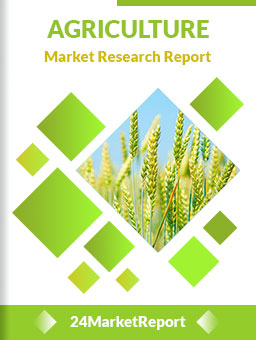
Download FREE Report Sample
Download Free sample
MARKET INSIGHTS
Global IoT RFID Electronic Tags market size was valued at USD 12,120 million in 2024. The market is projected to grow from USD 13,450 million in 2025 to USD 23,040 million by 2032, exhibiting a CAGR of 9.9% during the forecast period.
IoT RFID electronic tags are wireless tracking devices that combine RFID technology with IoT connectivity. These tags store product information in embedded chips and transmit data to readers through radio frequency signals - either passively using induced current or actively broadcasting signals. The decoded information is then processed by central systems for real-time tracking and inventory management across supply chains.
Market growth is driven by expanding IoT infrastructure and rising demand for asset tracking solutions. Recent data shows over 14 billion connected IoT devices globally, representing 18% year-over-year growth. China's rapid 5G deployment - with 2.3 million base stations operational by 2022 - exemplifies the infrastructure enabling RFID adoption. However, integration challenges with legacy systems and data security concerns present obstacles that manufacturers are addressing through advanced encryption and hybrid connectivity solutions. Key players like Zebra Technologies and Honeywell International continue innovating to meet diverse industry needs across logistics, manufacturing, and retail applications.
Explosive Growth in IoT Connectivity and 5G Deployment Accelerating RFID Adoption
The global proliferation of IoT devices, reaching 14 billion connected units in recent years with an 18% annual growth rate, is creating unprecedented demand for RFID solutions. As industries digitize their operations, RFID tags have become the backbone of asset tracking and smart connectivity. The rapid deployment of 5G infrastructure, particularly in tech-driven economies like China where over 2.3 million 5G base stations have been installed, enables faster data transmission between RFID tags and cloud platforms. This technological synergy allows real-time inventory management across vast supply chains, reducing operational costs by up to 30% in logistics applications.
Supply Chain Digitalization and Industry 4.0 Revolution Fueling Market Expansion
To know more about market statistics, Download a FREE Sample copy
The acceleration of Industry 4.0 initiatives across manufacturing sectors is driving double-digit growth in RFID adoption. Major automotive manufacturers now embed RFID tags in over 85% of assembly components, enabling precise tracking throughout production cycles. This digital transformation extends to retail, where omnichannel fulfillment demands accurate inventory visibility - leading prominent retailers to implement RFID systems that achieve 99% stock accuracy compared to traditional methods. The logistics sector's shift toward autonomous warehouses further amplifies this trend, with RFID becoming integral to robotic picking systems and smart storage solutions.
Furthermore, government mandates for product authentication and anti-counterfeiting measures are compelling industries to adopt smart tagging solutions. Pharmaceutical companies increasingly implement RFID to comply with serialization requirements, creating a projected $3.2 billion market segment by 2026.
➤ The RFID market's compound annual growth rate of 9.9% through 2032 reflects fundamental changes in how businesses manage physical assets in an increasingly digital economy.
High Implementation Costs and Infrastructure Limitations Constrain Market Penetration
While RFID technology offers transformative benefits, its adoption faces significant financial barriers. Complete system deployments including readers, middleware, and tags can require capital expenditures exceeding $250,000 for medium-sized facilities. This creates particular challenges in developing economies and price-sensitive industries where traditional barcode systems remain entrenched. Additionally, retrofitting older facilities with RFID infrastructure often encounters physical limitations - metal environments and liquid-filled containers can reduce read accuracy by 40-60%, demanding costly workarounds.
Standardization Challenges and Frequency Regulation Hinder Global Scalability
The absence of universal RFID standards across regions creates interoperability issues for multinational operations. While UHF tags dominate in North America at 902-928 MHz, European regulations restrict operation to 865-868 MHz bands. This fragmentation forces companies to maintain multiple tag inventories or compromise on performance. Furthermore, emerging IoT technologies like Bluetooth Low Energy beacons present competitive alternatives for certain applications, creating market confusion. Regulatory approval processes for new RFID hardware can take 12-18 months in some jurisdictions, delaying time-to-market for innovative solutions.
Emerging Applications in Healthcare and Smart Cities Create New Growth Frontiers
The healthcare sector represents a largely untapped market for RFID, with hospital asset tracking alone projected to grow at 18.4% CAGR through 2030. Recent implementations demonstrate RFID's potential to reduce equipment search times by 75% in medical facilities. Municipalities deploying smart city infrastructure increasingly incorporate RFID for waste management systems, with pilot programs showing 30% improvement in collection efficiency. The convergence of RFID with sensor technologies enables innovative use cases like temperature-monitoring vaccine shipments and structural integrity tracking in civil engineering projects.
Advancements in Printed and Chipless RFID Enable Mass Adoption
Breakthroughs in printable electronics are reducing tag costs below $0.05 per unit for high-volume applications, making RFID viable for disposable consumer goods packaging. Chipless RFID technologies that encode data in materials rather than silicon chips promise to further democratize adoption. Major brand owners in fast-moving consumer goods are piloting these solutions at scale, with early results showing 98% read rates on conveyor systems. The textile industry's transition to RFID for inventory management, currently at just 15% penetration, represents another $1.8 billion opportunity as apparel brands seek to combat counterfeiting and optimize omnichannel operations.
Data Security and Privacy Concerns Require Advanced Solutions
As RFID systems become more pervasive, they attract heightened scrutiny around data protection. Recent studies indicate that 68% of consumers express concerns about RFID-enabled merchandise tracking post-purchase. The European Union's General Data Protection Regulation imposes strict requirements on personal data collection through RFID, with non-compliance penalties reaching 4% of global revenue. Manufacturers must now implement cryptographic authentication and secure erase functions in tags, increasing unit costs by 20-30%. Cyberattacks targeting RFID infrastructure have risen 140% since 2020, prompting heavy investment in encryption technologies.
Material Science Limitations Constrain Performance in Harsh Environments
Extreme operating conditions present persistent challenges for RFID deployment. Tags attached to metal surfaces or embedded in concrete often suffer read range reductions exceeding 80%. High-temperature industrial processes above 150°C require specialized tags costing 10-15 times standard versions. The aerospace and automotive industries demand solutions that withstand vibration, chemical exposure, and electromagnetic interference - requirements that currently add $5-7 to per-tag costs. While new materials like high-temperature laminates show promise, widespread adoption awaits further cost reductions and performance validation.
Passive RFID Tags Lead the Market Due to Cost Efficiency and Widespread Adoption in Retail & Logistics
The market is segmented based on type into:
Passive RFID
Subtypes: Low Frequency (LF), High Frequency (HF), Ultra High Frequency (UHF)
Active RFID
Subtypes: Transponders, Beacons
Semi-passive RFID
Chipless RFID
Logistics Sector Dominates with Need for Real-Time Asset Tracking and Inventory Management
The market is segmented based on application into:
Public Transit
Product Assembly
Product Tracking
Logistics
Others
UHF Segment Grows Rapidly Owing to Long Read Range Applications in Supply Chains
The market is segmented based on frequency into:
Low Frequency (125-134 kHz)
High Frequency (13.56 MHz)
Ultra High Frequency (860-960 MHz)
Retail & Consumer Goods Leads with High Adoption for Inventory Management
The market is segmented based on end-use industry into:
Retail & Consumer Goods
Healthcare
Manufacturing
Transportation & Logistics
Others
Strategic Innovation and Expansion Drive Market Competition
The global IoT RFID Electronic Tags market features a dynamic and competitive environment, characterized by both established enterprises and emerging innovators. Alien Technology and Zebra Technologies currently dominate the market, leveraging their extensive product portfolios and strong technological expertise. Zebra Technologies, for instance, has seen significant growth due to its advanced RFID solutions for logistics and retail, capturing approximately 18% of the global market share in 2024.
Meanwhile, Honeywell International and NXP Semiconductors are intensifying their market presence through strategic acquisitions and R&D investments. Honeywell's recent launch of high-performance RFID tags for industrial applications exemplifies its commitment to expanding in the IoT ecosystem. NXP Semiconductors, on the other hand, has strengthened its position by focusing on secure and scalable RFID solutions for smart manufacturing and automotive sectors.
While large players continue to lead, mid-sized companies such as Confidex and Tageos are making notable strides by specializing in niche applications like healthcare and supply chain management. Their ability to deliver customizable and cost-effective RFID solutions has helped them carve out a loyal customer base in Europe and Asia-Pacific.
Looking ahead, the competitive landscape is expected to evolve further as companies prioritize sustainability and integration with 5G networks. Avery Dennison and Invengo Information Technology are actively developing eco-friendly RFID tags, aligning with global environmental regulations and corporate sustainability goals. Additionally, partnerships between RFID manufacturers and IoT platform providers are accelerating, signaling a shift toward more interconnected and data-driven solutions.
Alien Technology (U.S.)
Pepperl + Fuchs (Germany)
Tag Factory (France)
Confidex (Finland)
HID Global (U.S.)
Zebra Technologies (U.S.)
Honeywell International (U.S.)
Omron Automation (Japan)
NXP Semiconductors (Netherlands)
Avery Dennison (U.S.)
Syndicate RFID (U.S.)
Invengo Information Technology (China)
The rapid deployment of 5G networks is creating unprecedented opportunities for IoT RFID technologies, enabling real-time data transmission at scale. With over 2.3 million 5G base stations already operational in China alone and gigabit networks covering more than 500 million households, the infrastructure now supports massive IoT deployments. This connectivity surge directly benefits RFID electronic tags, as they can transmit product data faster and more reliably across supply chains. The integration of IPv6 protocols, now accounting for nearly 50% of mobile traffic in advanced markets, further enhances addressing capabilities for billions of connected devices.
Logistics Automation Demands
Global supply chain modernization efforts are accelerating RFID tag adoption, particularly for product tracking and inventory management. The logistics sector now represents over 28% of total RFID applications, driven by the need for end-to-end visibility. With e-commerce fulfillment centers processing 30% more parcels annually compared to pre-pandemic levels, RFID tags help reduce sorting errors by up to 99% in automated facilities. Temperature-sensitive shipments in pharmaceuticals and food sectors increasingly employ active RFID variants with environmental monitoring capabilities.
The Industry 4.0 revolution is transforming how manufacturers utilize RFID technology. Production lines now embed UHF RFID tags directly into components for real-time assembly tracking, reducing downtime by 22-35% through proactive maintenance alerts. Automotive manufacturers lead this adoption, with 68% of tier-1 suppliers implementing RFID solutions for parts verification. Meanwhile, the growing emphasis on circular economy practices is driving demand for reusable RFID tags in asset management, with some industrial tags achieving 10+ year lifespans despite harsh operating conditions.
North America
North America dominates the IoT RFID electronic tags market, driven by rapid digital transformation and widespread adoption in retail, logistics, and healthcare sectors. The region benefits from advanced infrastructure, strong regulatory support for IoT integration, and significant investments in automation. In 2024, the U.S. accounted for over 65% of North America's market share, with growing demand for ultra-high frequency (UHF) RFID tags in inventory management. However, data privacy concerns and high deployment costs pose adoption challenges. Major players like Zebra Technologies and Honeywell International continue to innovate, focusing on battery-free and NFC-enabled tags to meet sustainability goals.
Europe
Europe's IoT RFID market thrives on strict EU-wide data governance policies (e.g., GDPR) and robust industrial automation trends. Germany and the U.K. lead in RFID deployments for manufacturing and smart transportation, supported by initiatives like Industry 4.0. The region sees increasing demand for passive RFID tags, particularly in retail supply chains, where compliance with anti-counterfeiting regulations is critical. Despite slower growth in Southern Europe due to economic constraints, Scandinavia and Benelux countries are early adopters of eco-friendly RFID solutions with recyclable materials.
Asia-Pacific
The fastest-growing region, Asia-Pacific, is propelled by China’s aggressive IoT expansion—home to over 2.3 million 5G base stations—and India’s booming e-commerce sector. Low-cost passive RFID tags dominate here, catering to high-volume logistics and manufacturing applications. China alone contributes ~40% of global RFID tag production, with firms like Invengo Information Technology scaling operations. Challenges include fragmented standards and price sensitivity, though smart city projects and government-backed RFID adoption in agriculture (e.g., Japan’s livestock tracking) offer long-term opportunities.
South America
South America’s market remains nascent but shows promise, particularly in Brazil’s retail and agribusiness sectors. The region’s reliance on imported RFID hardware and limited local manufacturing capacity results in higher costs, slowing adoption. However, pilot projects in Buenos Aires’ public transit systems and Colombia’s coffee supply chains demonstrate gradual traction. Economic instability and underdeveloped IoT infrastructure remain hurdles, though multinational vendors are exploring partnerships to tap into Brazil’s emerging Industry 4.0 initiatives.
Middle East & Africa
MEA exhibits uneven growth, with the UAE and Saudi Arabia leading RFID deployments in logistics and oil & gas asset tracking. Megaprojects like NEOM and Dubai’s Smart City drive demand for active RFID solutions, while Africa’s market is nascent due to infrastructure gaps. South Africa shows moderate adoption in healthcare, but limited local expertise and reliance on imports constrain scalability. The region’s potential lies in RFID-enabled halal logistics and mining sector applications, though funding and awareness barriers persist.
This market research report offers a holistic overview of global and regional markets for the forecast period 2025–2032. It presents accurate and actionable insights based on a blend of primary and secondary research.
✅ Market Overview
Global and regional market size (historical & forecast)
Growth trends and value/volume projections
✅ Segmentation Analysis
By product type or category
By application or usage area
By end-user industry
By distribution channel (if applicable)
✅ Regional Insights
North America, Europe, Asia-Pacific, Latin America, Middle East & Africa
Country-level data for key markets
✅ Competitive Landscape
Company profiles and market share analysis
Key strategies: M&A, partnerships, expansions
Product portfolio and pricing strategies
✅ Technology & Innovation
Emerging technologies and R&D trends
Automation, digitalization, sustainability initiatives
Impact of AI, IoT, or other disruptors (where applicable)
✅ Market Dynamics
Key drivers supporting market growth
Restraints and potential risk factors
Supply chain trends and challenges
✅ Opportunities & Recommendations
High-growth segments
Investment hotspots
Strategic suggestions for stakeholders
✅ Stakeholder Insights
Target audience includes manufacturers, suppliers, distributors, investors, regulators, and policymakers
-> Key players include Alien Technology, Zebra Technologies, Honeywell International, NXP Semiconductors, Avery Dennison, Omron Automation, and HID Global, among others.
-> Key growth drivers include rising IoT adoption, demand for supply chain visibility, expansion of smart cities, and increasing automation across industries.
-> Asia-Pacific holds the largest market share, while North America leads in technological innovation.
-> Emerging trends include sensor-integrated RFID tags, blockchain-enabled tracking, eco-friendly materials, and ultra-wideband (UWB) technology.

Speak to our Custom Research Team and get the Custom Research in a budget
Custom ResearchFrequently Asked Questions ?
A license granted to one user. Rules or conditions might be applied for e.g. the use of electric files (PDFs) or printings, depending on product.
A license granted to multiple users.
A license granted to a single business site/establishment.
A license granted to all employees within organisation access to the product.
Upto Working 24 to 48 hrs
Upto 72 hrs max - Weekends and Public Holidays
Online Payments with PayPal and CCavenue
Wire Transfer/Bank Transfer
Hard Copy



 Industry Market Size
Industry Market Size SWOT Analysis
SWOT Analysis Industry Major Players
Industry Major Players Revenue Forecasts
Revenue Forecasts Historical and Forecast Growth
Historical and Forecast Growth Profitability Analysis
Profitability Analysis
























